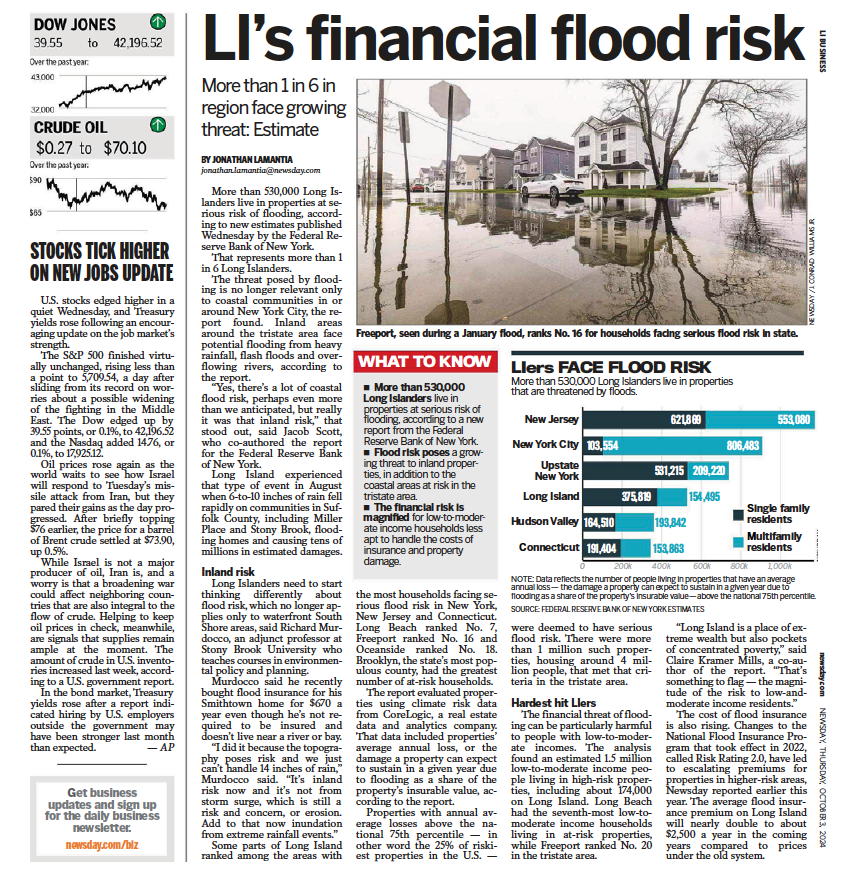The following was written for the Long Island Press. You can read the original here.
All too often when the subject is Long Island’s millennial population, the topic is only addressed rhetorically at best: “What do Millennials Want?” “Why Are Millennials Different?” Or, tellingly, “Where Will Millennials Live?”
These questions are genuine but the discourse never draws any significant conclusion.
Policymakers, stakeholders and developers need to realize that millennials here—and across the country—want what every generation that came before them has wanted: decent housing at a fair price, and a good paying job. Not much mystery there, yet our region continually struggles with these issues.
Throw into the mix the ever-ominous phrase “Brain Drain,” and what you get are buzzwords and inertia. The Brain Drain, a topic which I’ve written on at length, is a multifaceted excuse for developers, policymakers and whoever else is itching to put a shovel in the ground, to justify their projects.
A quick look into the actual population statistics reveals the fact that LI is experiencing a “birth dearth,” a natural cycle that highlights lower birth rates. Further research also yields another interesting trend—seemingly every area is experiencing a “brain drain” of some kind. The pressing question that none of these policymakers or stakeholders ask is: if every county, town and village is experiencing a brain drain, where, exactly, are these young people winding up?
Since I’ve started writing on the topic (and will continue to do so!), the narrative on the Island is starting to recognize the birth dearth theory, which was popularized locally by progressive planners such as Seth Forman.
Recently, Amanda Fiscina, a former classmate of mine at Fordham University, wrote a compelling column for Newsdayentitled “Where Should 20-Somethings on Long Island Live?” By focusing on actions that can be taken like approving mixed-use zoning and supplying more apartments and co-ops, she offered a fresh take on topics that have been beaten to death by vested interests.
LI’s millennials, often the focal point of development strategies from both local government and private enterprise, need more affordable options. Instead of merely arguing for “cool downtowns” as so many think pieces on the subject tend to do, Fiscina argues for smart incentives to promote greater diversity of housing stock and suggests realistic means for millennials to build equity while remaining in the region.
Time and time again, policymakers, and the nonprofits, developers and the stakeholders who local leaders task with addressing this supposedly critical issue all say the same thing. If you build it, they will come—“cool downtowns” with restaurants, rooftop bars, bus-rapid transit and so on—with little to no consideration on how, exactly, the millennials who are being targeted with these “destinations” will be able to frequent those places being built. Millennials on Long Island need decent job opportunities, not organic spas that they can barely afford.
Fiscina hit a nerve when she wrote: “The lack of housing choices is pushing millennials off the Island or to move in with their families. It’s time to stop judging when we pick those two options if Long Island won’t build what we need.”
She’s right—we’re not building what millennials really need. Our regional economy must be diversified. Retail expansion is what passes for economic development, but few millennials loaded down with student loan debt can support a “cool” lifestyle on LI on retail wages alone. It’s time to adapt the Island’s suburbia to the employment trends and economic demands of the 21st century.
As our hospitality and retail industries swell, other occupations offering higher salaries and better opportunities for educated residents continue either to decline, as is the case of local manufacturing, or struggle to establish a foothold in the Nassau-Suffolk region. Our current transit-oriented boom is rooted in sound planning principles, but the region must go further. It is one thing to build rental housing, but if it isn’t affordable for the supposed target audience, then what good is it?
Fortunately, there is hope. Efforts to incubate new technology firms from non-profit groups such as Accelerate Long Island and LaunchPad Huntington, and a renewed focus by the Rauch Foundation to help coordinate the Island’s prestigious research institutions may attract attention from the right business sectors and lead to job creation. Let’s take it to the next level by synchronizing the approach of local Industrial Development Agencies to accompany the endeavors of the Long Island Association. If LI’s municipalities no longer have to compete with one another, our region will be free to stave off bigger threats from other states.
As a result, millennials may finally get the creative solutions to the complex problems vexing them here today.









